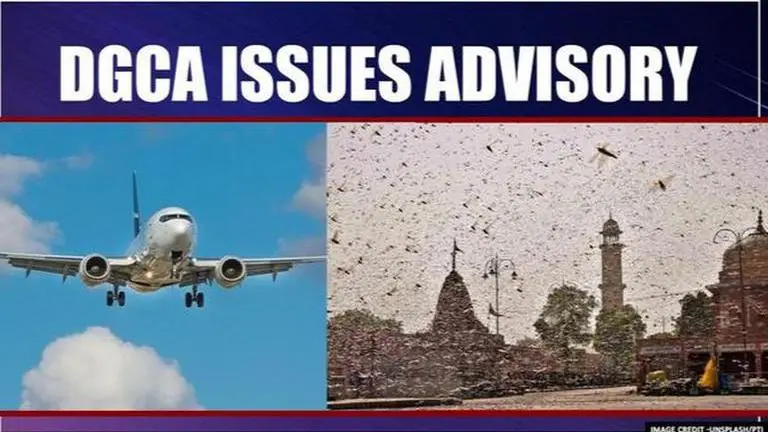Updated 29 May 2020 at 18:49 IST
DGCA issues advisory for domestic flights to tackle locust swarm threat
Following the locust attack threat over the subcontinent, the Directorate General of Civil Aviation has issued an advisory to tackle the impending threat
- India News
- 3 min read

Following the locust attack threat over the subcontinent, the Directorate General of Civil Aviation has issued an advisory to tackle the impending threat. The DGCA has identified that locusts pose a threat to aircraft in the critical landing and take-off phase of a flight as they are generally found at lower levels. It has also stated that locust swarms can partially or fully block pilot and static sources leading to erroneous instrument indications, especially unreliable airspeed and altimeter indications.
This comes just days after the DGCA had resumed domestic air travel amid the Coronavirus forced lockdown. The locust swarms are also capable of blocking the windshield of a flight, in turn, impacting the pilot's forward vision. The DGCA has cautioned pilots of flights under 'Visual Flight Rules' to be aware of the presence of large swarms obstructing visual ground contact and has advised air traffic controllers to advice information on the presence of swarms in the vicinity to all arriving and departing flights.
Advertisement
The DGCA has advised pilots to share information of locust swarm location, if sighted during the journey of a flight and 'strongly' avoid flights through such locations. 'The only favourable aspect is that locust do not fly at night, thus providing a better opportunity to sight and avoid them,' advisory by Ravi Krishna, Joint Director General read.
Furthermore, the DGCA has also advised pilots to provide a log giving details of any malfunction experienced post a flight through a locust swarm and also instructed the engineering crew to conduct checks as mandated prior to the next flight. "Ground handling agencies should be aware that locust swarms pose risk to parked aircraft, where possible air inlets and probes should be covered," the advisory added.
Advertisement
Government's measures
The Union Agriculture Ministry on Thursday said that 15 sprayers are being procured from the UK in a fortnight and plans are afoot to deploy drones and helicopters for the aerial spray of pesticides. Union Agricultural Minister Narendra Singh Tomar has said that control measures are in full swing and in close coordination with state agriculture departments, local administration and Border Security Force (BSF).
Known to have travelled from the gulf, the huge swarms of locusts transit from Pakistan to India. The first locust attack of this year was reported from Ganganagar, a district in north Rajasthan bordering Pakistan on May 11 and have now spread to Punjab, Gujarat, Maharashtra, Madhya Pradesh, Uttar Pradesh and Andhra Pradesh.
Published By : Jitesh Vachhatani
Published On: 29 May 2020 at 18:49 IST
